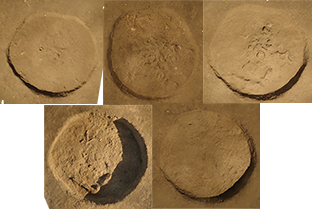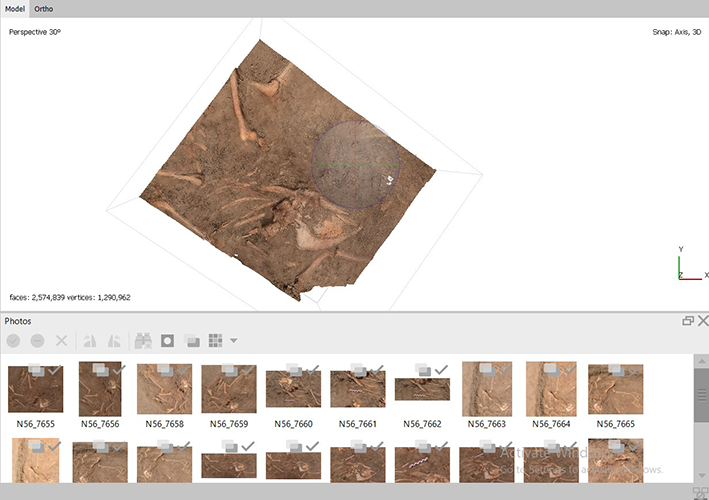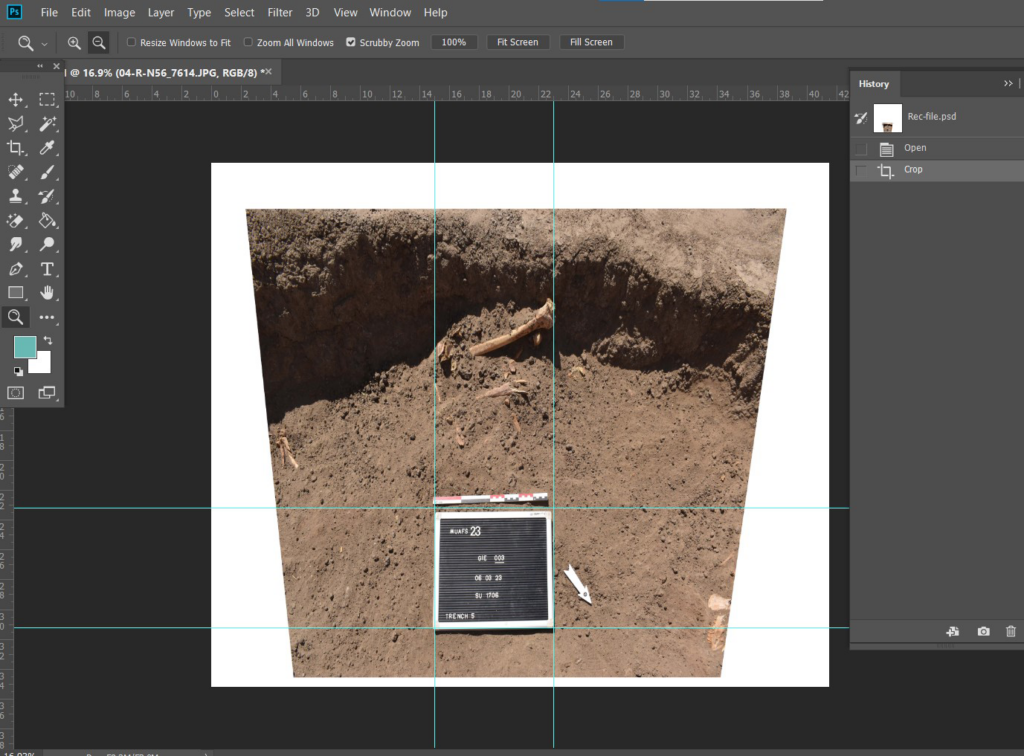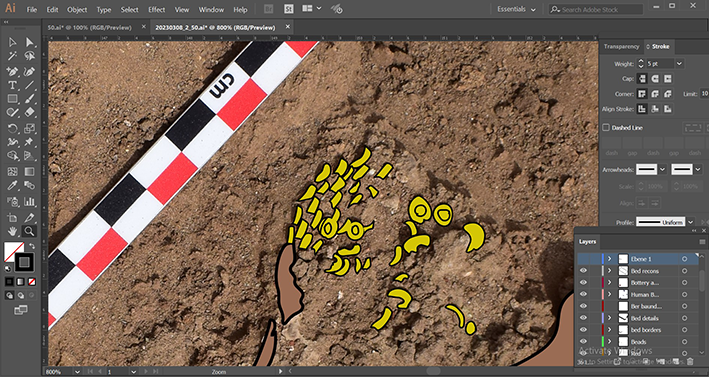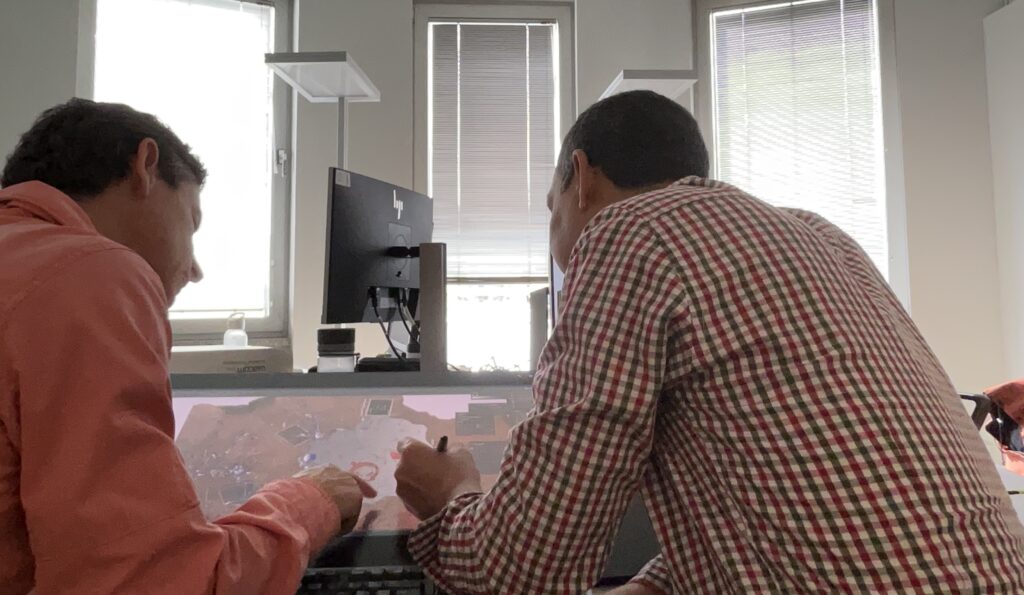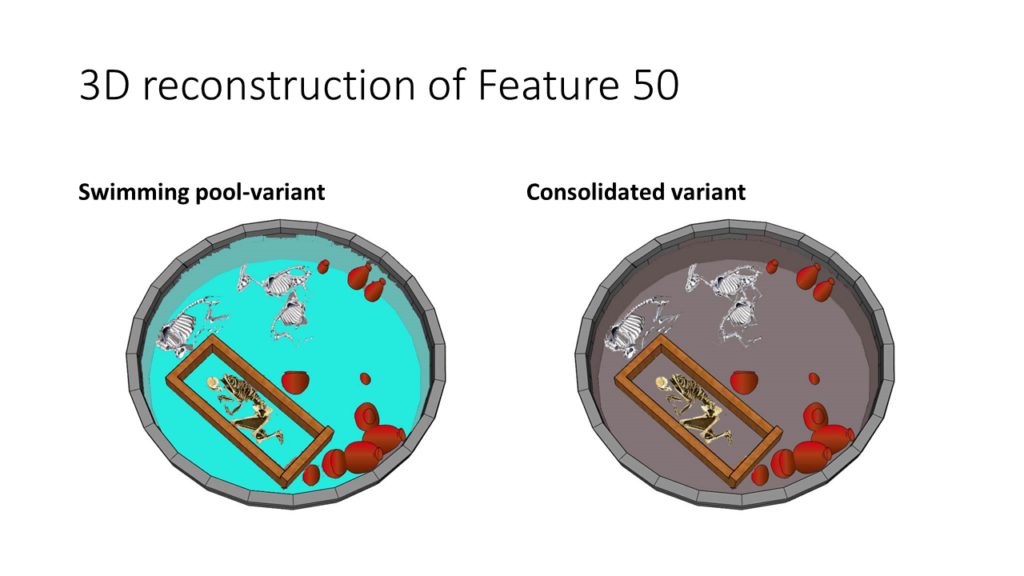While our PostDoc Hassan Aglan is busy with finalising the documentation from our excavation in 2023 in Kerma cemetery GiE 003, I went back to some tombs we excavated there already in 2022. Today, I would like to present a very interesting burial which is characteristic for the Middle Kerma Period (see Budka 2022).
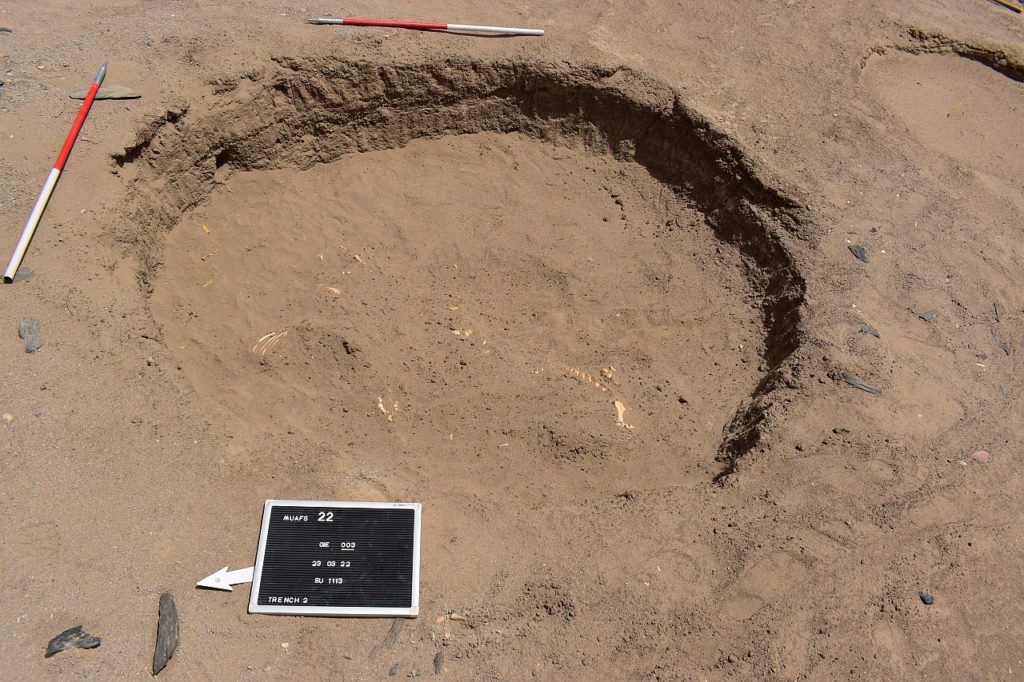
Feature 26 in Trench 2 is a representative circular pit of the Middle Kerma period with typical dimensions (2.4m in diameter). Like the other structures in GiE 003, this grave was also looted. Nevertheless, some interesting finds were found: human and animal bones; pottery; a wooden fragment; a snail which is pierced and functioned as a pendant; a pebble pendant; 86 small sandstone disc beads; 10 small faience disc beads (blue); 1 large flat disc bead made of shell/bone; 1 small green faience disc bead and one copper dagger.

Feature 26 is the only burial in Trench 2 which yielded some personal adornments (a beautiful snail pendant and a pebble pendant, both of Nubian tradition) as well as grave goods like a dagger and two animal offerings in situ. That various materials were used for beads in diverse sizes in this tomb is also remarkable.

The dagger is especially significant – unfortunately, MUAFS 027 is a broken piece (12.2 cm in lenght), decorated with four lines stemming from the tip until the bottom, forming a triangular pattern.
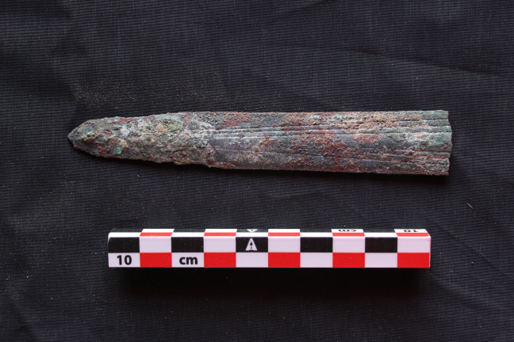
Copper daggers are well attested from funerary contexts in Kerma city and are probably associated with ceremonial use. Following Andrea Manzo (2016), this dagger can be interpreted as an indicator of elite status and Kerma identity (see also Walsh 2022).
However, one of the ceramic vessels from Feature 26, 363-3/2022, a small black topped bowl with irregular incised decoration is slightly unusual but has parallels in both the Kerma tradition and the Pan-Grave horizon (de Souza 2019, 214, fig. 19a).
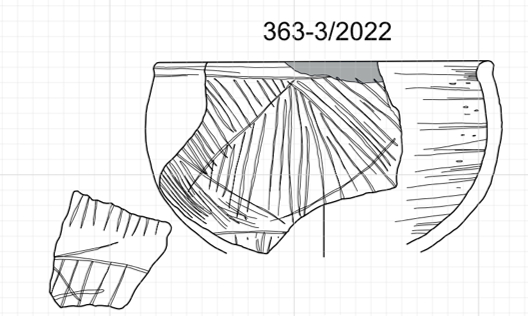
This might illustrate cultural encounters between various Nubian groups in the region. Considering the discovery of Feature 50 in Trench 5 in 2023, this is now especially likely.
Similar to Feature 50, two almost complete animal skeletons were found in Feature 26. They were carefully excavated by our inspector Huda Magzoub and appear to be goat/sheep, but this needs to be confirmed by zooarchaeological analysis. At the Kerma cemeteries of Ukma and Akasha, also gazelle offerings were frequently found in Middle Kerma circular pit types (see Vila 1987, 32-33 and e.g. Tomb 2, 39, fig. 41; Maystre 1980, 190).
Overall, Feature 26 offers a wealth of stimulating questions and shows how much potential there is in the cemetery GiE 003 and that our work is far from finished.
References
Budka 2022 = J. Budka, Investigating Nubian funerary practices of marginal communities: new evidence from a Kerma cemetery at Ginis, Egitto e Vicino Oriente 45 (2022), 37‒62.
Manzo 2016 = A. Manzo, “Weapons, ideology and identity at Kerma (Upper Nubia, 2500-1500 BC)”, Annali Sezione Orientale 76 (1-2) (2016), 3-29.
Maystre 1980 = C. Maystre, Akasha I, Genève 1980.
de Souza 2019 = A. de Souza, New horizons: the Pan-Grave ceramic tradition in context, Middle Kingdom Studies 9, London 2019.
Vila 1987 = A. Vila, Le cimetière Kermaique d’Ukma Ouest, Paris 1987.
Walsh 2022 = C. Walsh, “Marginal Communities and Cooperative Strategies in the Kerma Pastoral State”, JNEH 10, https://doi.org./10.1515/janeh-2021-0014

